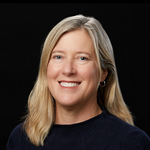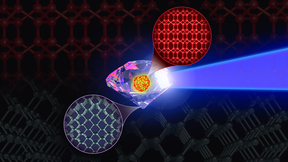Two LLNL scientists named Optica Senior Members
 (Download Image)
(Download Image)
Lawrence Livermore National Laboratory (LLNL) scientists David Gibson and Paul Pax have been named senior members of Optica, recognizing members with more than 10 years of professional experience in optics or an optics-related field.
Lawrence Livermore National Laboratory (LLNL) scientists David Gibson and Paul Pax have been named senior members of Optica (formerly OSA). Senior membership status recognizes members with more than 10 years of professional experience in optics or an optics-related field.
The 2023 class joins a distinguished group of scientists, engineers, entrepreneurs and innovators who have demonstrated exemplary professional accomplishments in optics and photonics. Click here to see the entire Optica 2023 class.
David Gibson
Gibson, a staff scientist in the National Ignition Facility and Photon Science (NIF&PS) Directorate, is working on directed-energy research projects such as diagnostics development and analysis for the diode-pumped alkali laser efforts. Recently, he supported an upgrade to NIF’s Advanced Radiographic Capability for improving the pulse contrast and studies of multi-pulse damage thresholds for NIF optics for potential future diagnostics.
“It’s a great honor to be recognized by Optica and I appreciate the support for my nomination,” Gibson said. “Sometimes it’s hard to tell how broad of an impact you are having, so this is very gratifying. In my career at LLNL, I’ve had the opportunity to work on so many important, challenging projects.”
He earned his bachelor's degree in physics from Harvey Mudd College and his Ph.D. in applied science from the University of California, Davis. Starting as a graduate student, he worked on early demonstrations and applications of Compton-scattering based -ray sources at LLNL. His work demonstrated the first measurement of Nuclear Resonance Fluorescence using a Compton source in 2010. He coauthored patents on the technology, which are now being licensed.
He also has worked on novel neutron-imaging systems, using deuteron beams on carbon targets to generate neutrons for imaging dense objects. This included development of distributed control systems to allow a single operator to run the full neutron source as well as image collection and analysis using the resulting beam.
Paul Pax
Pax, a staff scientist in the Computational Engineering Division, has worked on many projects in NIF&PS over his 18 years at LLNL. He is leading optical modeling for the design of a new high-gain amplifier for NIF, a critical component of NIF sustainment. Most recently, he led the construction and deployment of a front-end system for a high-energy laser project.
“I’m honored to have been nominated to the 2023 class of Optica senior members,” he said. “It's gratifying to be recognized by the Lab and Optica society. The Lab’s an amazing place, there's so much going on here — so much opportunity to learn!”
Pax earned his bachelor’s degree in physics from the College of the Holy Cross and his Ph.D. in optical science from the University of Arizona at Tucson. He spent 12 years working in industry on novel laser resonators, spectrometers and autocorrelator diagnostic instruments and optical receivers.
At LLNL, he has worked with the Fiber Technologies group to develop multiple novel waveguide designs, including designs for wavelength selective, large-mode area and dispersion-managed fibers. He also has contributed to design and analysis for imaging and non-imaging optics, as well as scoping studies for specific laser systems.
He supports Optica and the optics community at large as a peer reviewer for the journals Optics Letters, Optics Express, and Applied Optics, and is an associate editor of Optical Engineering.
Contact
 Patricia Koning
Patricia Koning
[email protected]
(925) 423-4332
Related Links
OpticaTags
Lasers and Optical S&TLasers
National Ignition Facility and Photon Science
Featured Articles







